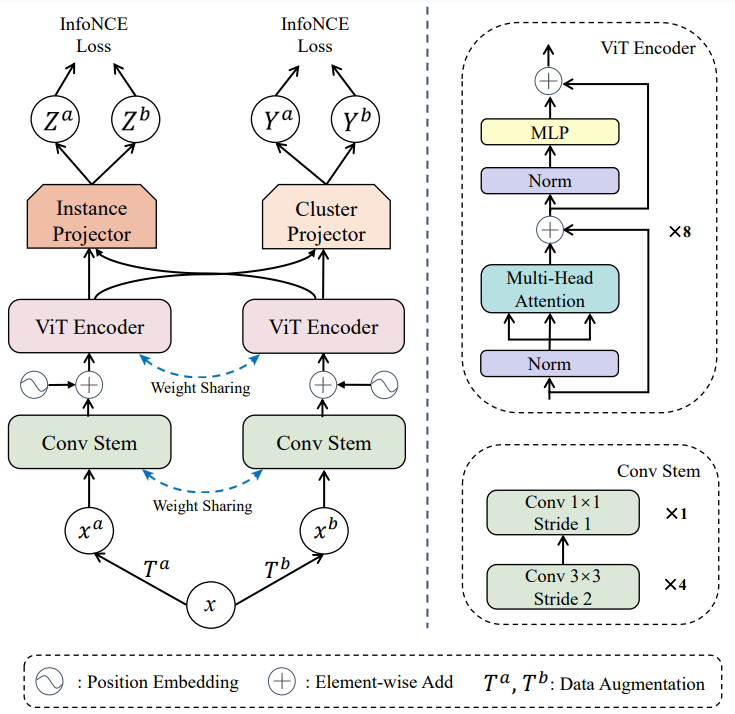Vision Transformer for Contrastive Clustering
Vision Transformer (ViT) has shown its advantages over the convolutional neural network (CNN) with its ability to capture global long-range dependencies for visual representation learning. Besides ViT, contrastive learning is another popular research topic recently. While previous contrastive learning works are mostly based on CNNs, some recent studies have attempted to combine ViT and contrastive learning for enhanced self-supervised learning. Despite the considerable progress, these combinations of ViT and contrastive learning mostly focus on the instance-level contrastiveness, which often overlook the global contrastiveness and also lack the ability to directly learn the clustering result (e.g., for images). In view of this, this paper presents a novel deep clustering approach termed Vision Transformer for Contrastive Clustering (VTCC), which for the first time, to our knowledge, unifies the Transformer and the contrastive learning for the image clustering task. Specifically, with two random augmentations performed on each image, we utilize a ViT encoder with two weight-sharing views as the backbone. To remedy the potential instability of the ViT, we incorporate a convolutional stem to split each augmented sample into a sequence of patches, which uses multiple stacked small convolutions instead of a big convolution in the patch projection layer. By learning the feature representations for the sequences of patches via the backbone, an instance projector and a cluster projector are further utilized to perform the instance-level contrastive learning and the global clustering structure learning, respectively. Experiments on eight image datasets demonstrate the stability (during the training-from-scratch) and the superiority (in clustering performance) of our VTCC approach over the state-of-the-art.
PDF Abstract







 CIFAR-100
CIFAR-100
 DTD
DTD
 Chaoyang
Chaoyang